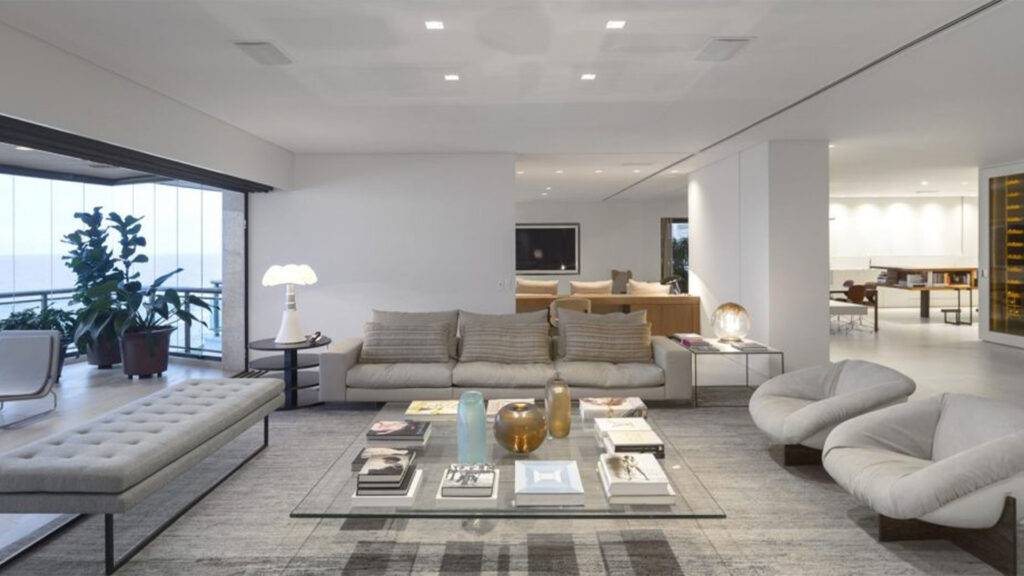When it comes to designing a space that feels truly yours, understanding the basic elements of design is key. Whether you’re designing a cozy living room or a sleek modern kitchen, every room benefits from these core design principles. Today, we’re diving into the six essential elements of design that make any space feel balanced, inviting, and functional. Let’s break them down and see how you can use them to create a space that works for you.
Color: The Mood Setter
Color isn’t just about aesthetics—it’s about setting the mood of a room. Imagine walking into a room painted in bold red. What’s the first thing you feel? Energized, maybe even a little intense. Now think of a soft, light blue space—peaceful, calm, and relaxing.
Each color has a psychological effect, and knowing how to use them can dramatically change how a room feels. Warm tones like reds, oranges, and yellows create warmth and intimacy, while cool tones like blues, greens, and purples can open up a room and evoke tranquility. When selecting colors for your home, consider the vibe you want to create and how the colors will work together.
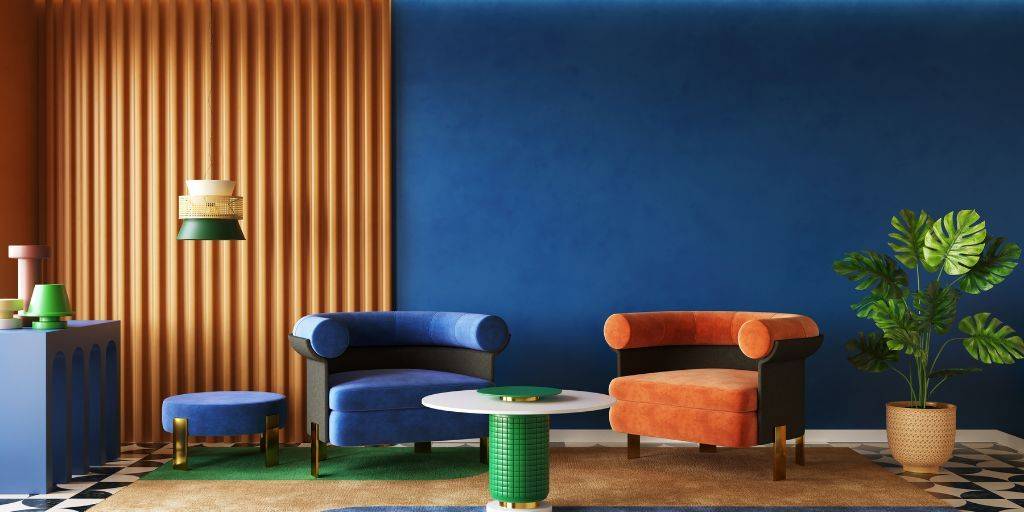
Tip: Start with a neutral base and build your color palette from there. Add accent colors through furniture, art, and accessories to bring personality and depth to the space.
Line: Creating Structure and Movement
Lines are everywhere in design. Whether they’re in the furniture, the architecture of the room, or the decor, lines help guide our eyes and create a sense of direction. Straight lines evoke order and structure, while curves and organic lines add a sense of flow and softness.
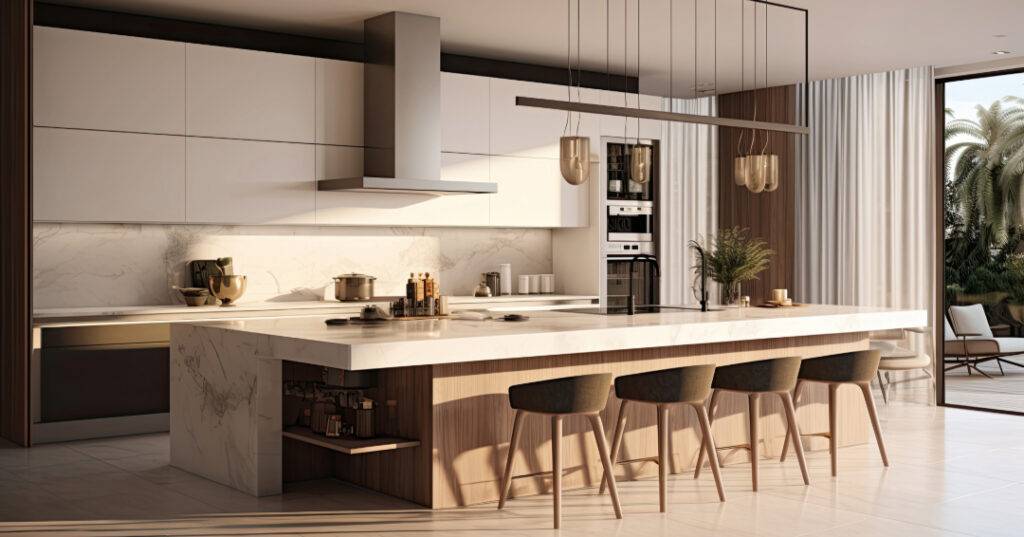
In your home, lines help establish both visual and functional balance. Think about the lines in your furniture. A sleek, modern sofa with clean, straight edges will feel more formal and structured, while a sofa with soft, curved lines adds a relaxed vibe.
Tip: Use lines to create visual pathways that guide movement through your space. In open layouts, lines can help define zones—like a rug or a row of bookshelves separating the living and dining areas.
Shape: Defining the Space
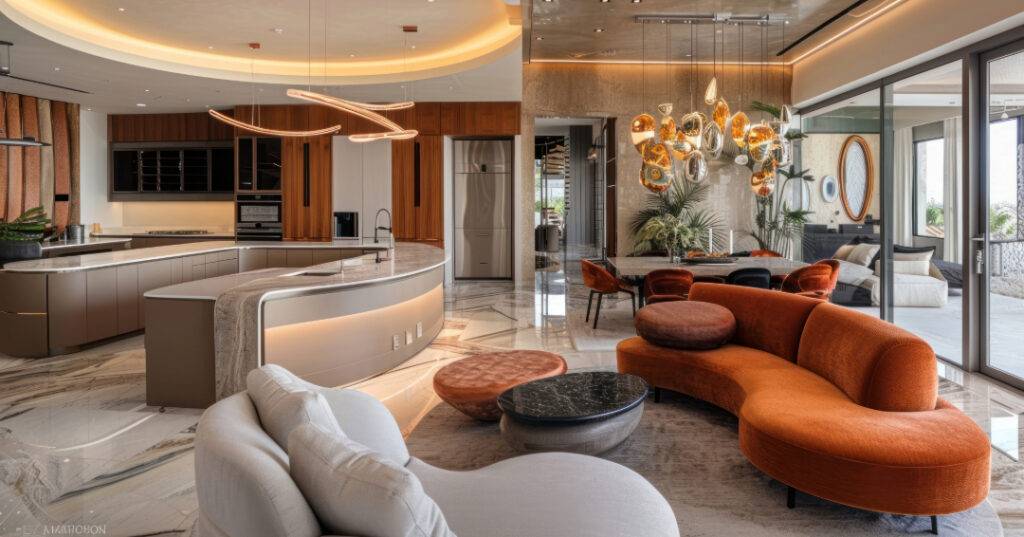
Shapes are another core design element that can either soften or enhance the overall style of a room. They come in two basic types: geometric (think squares, rectangles, circles) and organic (more freeform, like the curves of nature). These shapes interact with each other to bring rhythm and contrast into a design.
Geometric shapes often bring a sense of order and symmetry, while organic shapes introduce fluidity and softness. A combination of both creates a dynamic and visually interesting space.
Tip: Use different shapes in your furniture and accessories. A round coffee table paired with a rectangular rug creates contrast that can make the space feel balanced and inviting.
Texture: Adding Depth and Interest
Texture is what gives a room depth. It’s not just about how things look; it’s about how they feel. From smooth leather sofas to cozy velvet throw pillows, textures can make a room feel more inviting and layered.
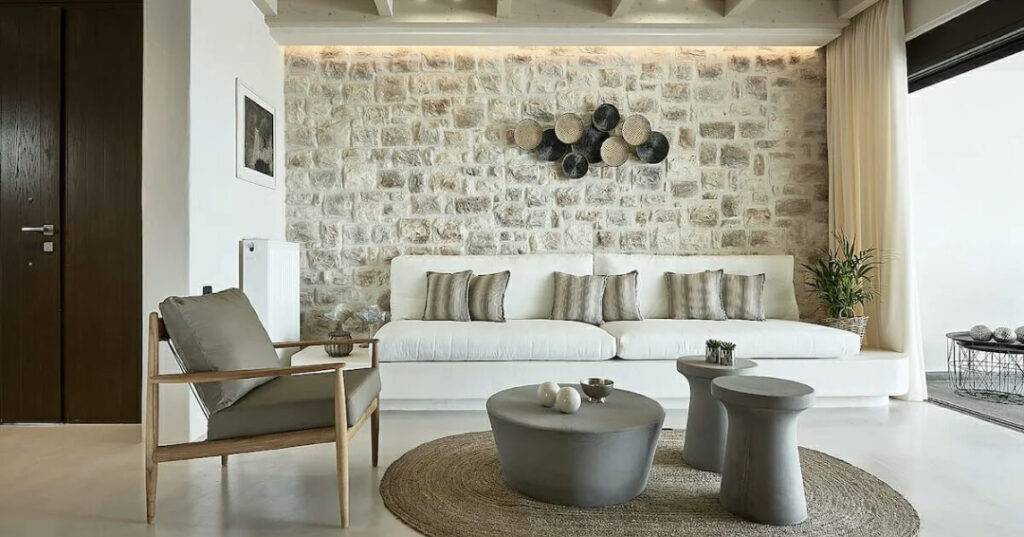
Incorporating a variety of textures—like a plush area rug paired with sleek leather chairs or a linen curtain with a wooden coffee table—adds richness and interest. It’s also a great way to bring balance to a room that might be too sleek or too soft.
Tip: Experiment with mixing textures. A little contrast—such as pairing hard, shiny surfaces with soft, matte finishes—adds depth and complexity to your design.
Space: The Foundation of Function
Space is the unseen but incredibly important element of design. The way you arrange furniture and objects determines the flow of the room, how easily people can move through it, and how functional the space is.
Negative space, or the area around and between objects, is just as important as the items in the room. Too much clutter can make a room feel cramped and chaotic, while a thoughtfully arranged space allows each element to breathe and be appreciated.
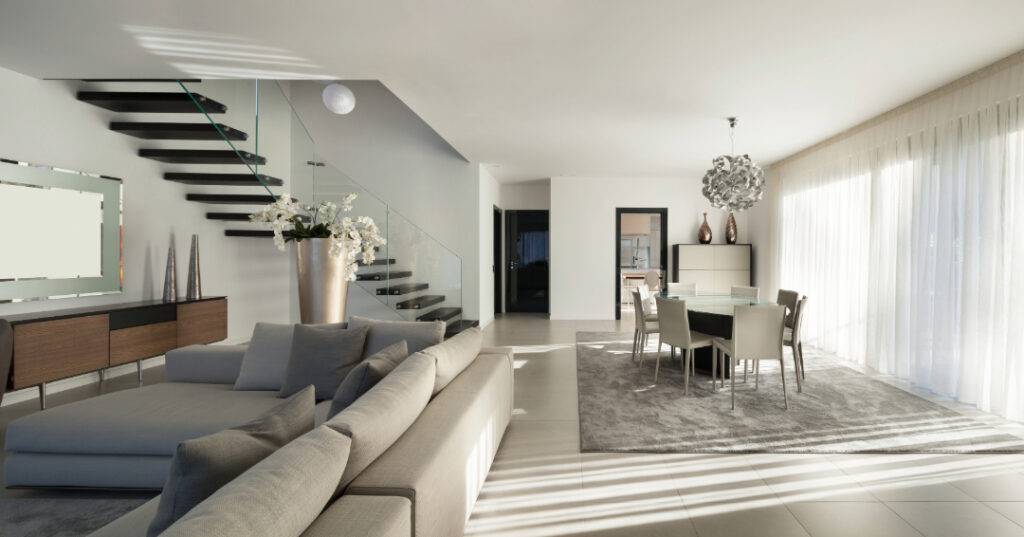
Tip: Leave space between furniture pieces to create a sense of openness. Avoid overcrowding—your space should feel easy to navigate and comfortable for everyone.
Form: Bringing It All Together
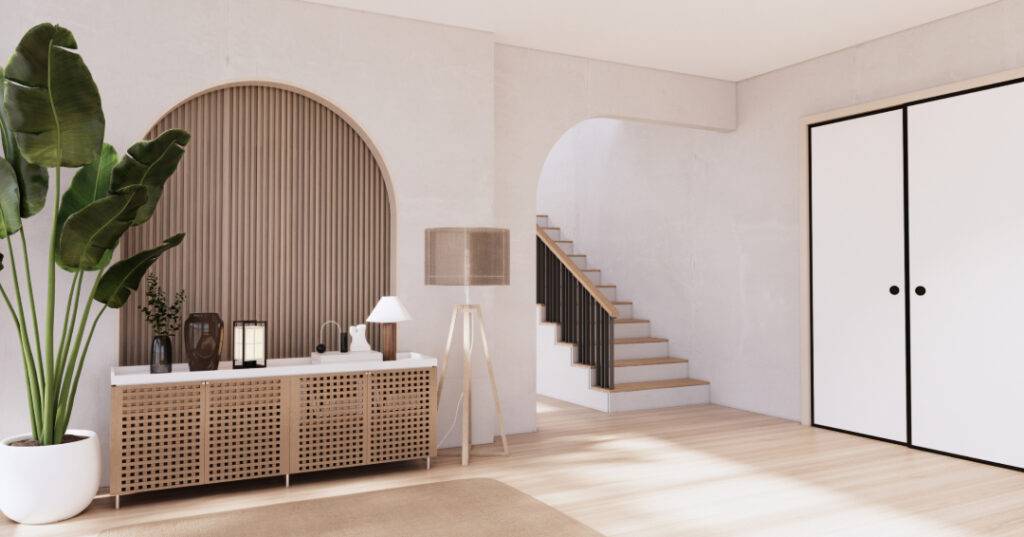
Form is essentially the three-dimensional aspect of design—how things look in terms of volume, shape, and structure. It’s about creating a balance between all the other elements and ensuring that the form of your furniture and accessories complements the room’s overall design.
Incorporating a variety of forms can make a room feel dynamic. Think about the contrast between a tall, angular bookshelf and a round coffee table. These different forms work together to keep things visually interesting.
Tip: Mix larger, bulkier forms with smaller, lighter ones to create a balanced and aesthetically pleasing space.
These six elements—color, line, shape, texture, space, and form—are the building blocks of every great design. By understanding how they work together, you can create a home that not only looks beautiful but also feels harmonious and functional.
The best part? There’s no one-size-fits-all approach. Play with these elements and see how they come together in your space. Whether you’re designing a small apartment or a sprawling house, these principles will help you turn any room into a space you love.

